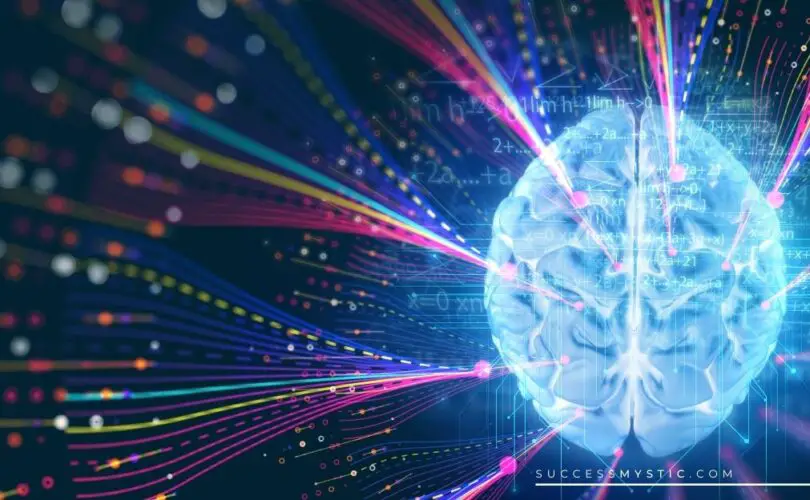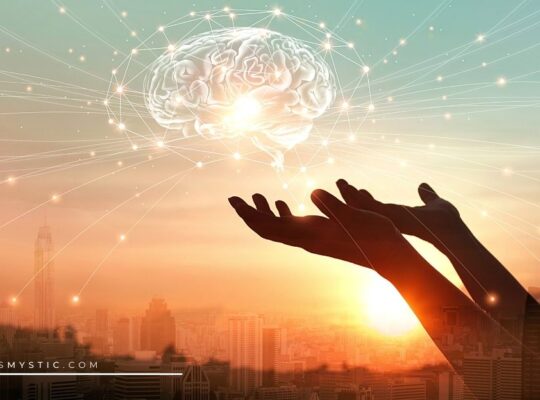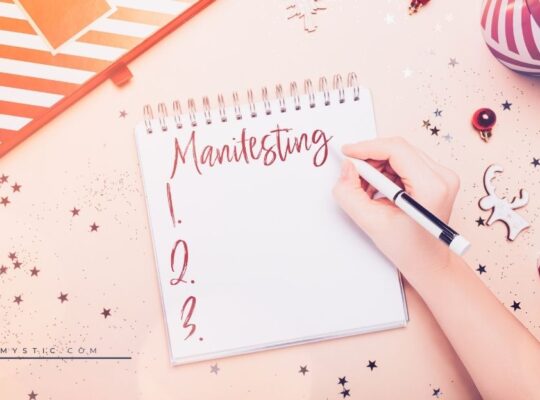The Need To Escape Reality
We often find ourselves stressed or depressed during everyday life. What we are all going through in this time is overwhelming for many people. Whether an individual, partnership, family, couple, or community, it can be very difficult to stay calm and confident and optimistic when things around you seem to be falling apart. When we are stressed, we often look to ways we can escape reality.
Many people reach for distractions and even detrimental actions in order to relieve stress. The problem with temporary or short-term fixes is that they often fade quickly and can leave us more depleted and run down.
The current global pandemic has brought stress to the worldwide community. The pandemic has brought concern and stress over many people’s health, safety, and livelihood. Many people have become ill and some people have lost their lives.
Many countries have been under lockdown and have not been able to be free living their normal lives. Instead, there has been fear and caution and warnings to be afraid of and to take note of.
Rather than being aggressive, angry, upset and out of sorts, we can take our mindset into our own hands. We can begin to make changes to our perspective and improve our outlook. When we take control of our outlook and our minds we can begin to think differently and envision a new and improved future for ourselves.
What Is Visualization
Visualization is defined as the formation of a mental image of something. Visualization is a practice that can be utilized to envision a new outcome or situation in our minds to bring calm and clarity. Visualization involved creating images that can display goals or dreams for life.
Visualizations helps to narrow down focus and bring awareness to goals and aspirations. Once you have created a clear image of what you would like to manifest, you can begin to feel the emotions associated with reaching your goals. This visualization tool of linking your images with emotions is a motivating factor in helping reach goals.
The purpose of visualization is to help you achieve whatever you want to accomplish in life. In order to receive what you want, it is important to create a clear image of what you desire.
You can also create a pathway of how to reach your goals. When we visualize, we raise our vibration and frequency in order to meet a new reality when it is ready to show itself to us.
Visualization is similar to creative playing pretend we may have done as children. When we are young, we allow ourselves to envision wild ideas that may seem out of reach in our adult lives. But if we can continue to bring an element of fun and play into our visualizations, we can begin to bring a lighthearted energy to our manifestation and realize that whatever we can dream we can begin to take action on in the real world.
Visualization is a powerful tool to expand our mindset and allow us to open to new experiences. We may not know exactly how our life will unfold or how we will get to the end result we desire, but by focusing on our vision and anticipated outcome, we can stay aligned and open to our higher purpose. Visualization tunes us into our heart and our higher mind.
Visualization And The Brain
When it comes to the brain, it is now known that the mind cannot distinguish between reality and what is imagined. When we have thoughts, they create the same sequence of neurochemical release whether the activity is actually happening in the present or has occurred in the past or may in the future.
The brain receives the same imagery whether the situation is happening in real time or imaginary time. If you can envision yourself achieving a goal like giving a presentation, your brain perceives that you have done well and creates a source of success for that occurrence.
Neurochemicals in the brain take over the motor control, attention, and ability to plan and can push you into taking action. The neurons in the brain can create new pathways for novel ideals and outcomes to take place.
This is how we form new beliefs and also new paradigms. When we can use our perception uniquely in the world, we can begin to come to new conclusions about our experiences.
Visualizing activates the Reticular Activating System, which is the system of the body which is able to scan for new ideas and create new possibilities. This system often relies on the idea of the law of attraction, which implies that when we begin thinking about something in a meaningful way, we will begin to be presented with opportunities to bring new experiences into our lives to live out these new goals. When we can take notice of new opportunities, we allow ourselves to recognize how we can best take action towards achieving our dreams.
18 Ways Visualization Heals You What The Science Shows
Many scientific studies have shown the effectiveness of creative visualization for achieving goals.
1| Visualization plays an essential part in sports and trainings because the mind is the preceptor and creates attention. And where attention goes, energy flows. In other words, where we place the attention is where we can begin to direct the body into taking action to get us physically, mentally, and emotionally where we want to be in life.
2| Visualization has various formats, but innumerable benefits. It is possible to us visualization to influence immunity, stress, healing and to manage pain in the body.
3| Visualization can also improve cognition and can improve confidence and achievement of goals. One scientific study showed that treating stress, anxiety and depression can impact life in a positive way and can improve personal relationships.
4| We can also begin to let go of bad habits that have been holding us back (Advanced Visualization technique for Individual and Couples Therapy, Heitler, Susan).
5| When we use visualization, the brain recreates images in the mind, and can also associate mental imagery using all of the senses including sight, sound, taste, touch, smells and other movements and measurements.
6| Visualization can help us gain clarity of thinking and can help us relax and unwind so we can be creative in envisioning a new outcome.
7| Visualization can complete psychology practices by using models to reduce pain, depression, anxiety, or stress.
8| Visualization can bring positive effects like improving self-confidence and enhancing overall mood (Guided Imagery 101, Naparstek) (When Science Meets Mindfulness, Powell, Alvin).
9| Visualization is not only used for goal setting and achieving but is also popular for relaxation and calming stress. Visualization can be done to induce relaxation by envisioning a remembered image or a visualization from a dream or a place of peace, like the beach, the forest or other comfortable scene.
10| Sounds of calm nature or other meditative sounds can be introduced to direct the mind to a calm state. There may be a guide who leads the visualization or not, but most relaxation techniques involve mindful breathing and sitting quietly in a contemplative state.
Dr. Herbert Benson from Harvard University is a professor who works in the field of meditation. He started the term the Relaxation Response, which uses meditation and visualization to create deep relaxing states of mind and body. (Relaxation Techniques for Stress relief, United Nations).
11| Visualization has been used for stress relief to impact the nervous system and bring a calm energy to the mind and body and to lower the heart rate.
12| Visualization may also assist people in the treatment of addictions. In a study of seventy six outpatient clients with chemical dependency, patients were given six hour long visualization exercises over a period of three weeks.
This treatment was given instead of a problem-solving skills course that was usually given. The study tests demonstrated that the visualization and the actual education produced results that were equally as positive (A study of visualization and addiction treatment, Kominars, Kathryn).
13| Other studies have been conducted to assist in healing from psychological afflictions including PTSD, stress disorders, phobias, anxiety, depression, bipolar, schizophrenia and others (Guided Imagery, Wikipedia). People often become stressed over mental pictures or movies created by the mind in made up scenarios.
Whether these imagined scenarios are real or not, they can often cause distress or anxiousness. When people have PTSD and other trauma, they may experience flashbacks to the trauma which can incite stress. Negative images in the mind can cause depression and anxiety to continue to pervade the mind. Yet, visualization and guided imagery can be a source of relaxation and stress reduction.
14| Guided imagery visualization has been proven in scientific studies to be an effective treatment for psychological and physical pains and is important for a holistic therapy process (Exploratory study to decrease postprandial anxiety: Just relax!, Shapiro).
15| Visualizing isn’t about daydreaming and fantasy, but rather is a scientific practice that one undertakes in order to expand the horizons of self and to gain confidence in the path one has chosen and is continuously choosing.Instead of being stuck in our existence and feeling hopeless, we can begin to create confidence in ourselves again.
16| Even when anxious or depressed, visualization can begin to create a new vision of the self that is more empowered and positive. Visualization has been undertaken by athletes and others to improve their performance and overall health and wellness.
17| Visualization is a tool that can enhance our clarity and can allow us to achieve the highest goals and visions for our lives. Often, we not only lack motivation, but what we actually lack is clarity and understanding of what we want and need to achieve in order to be fulfilled and happy. When we are not clear about our desires and wishes, we can begin to float along a course of life without dedicating much direction to our outcomes.
Instead of achieving a life we love, we get stuck in the day to day monotony of what we need to get done for ourselves, our family or friends or community. When we are not living life according to our own highest ideals, we can become stressed or depressed and can experience anxiousness and despair.
Instead of wallowing in the sadness of a situation we have gotten ourselves into, we must begin to take action to clear our situation and begin anew. When we can engage with a fresh perspective, we allow ourselves to start creating a new vision for our lives, and eventually, a new outcome.
18| Visualization is a powerful, scientifically proven modality to explore the opportunities we have to create a life that fulfills our goals and desires. When we create a vision from our highest self, we can align with the vibration of creation and begin to see these goals come to life with actions taken in the material world.
When our emotional vibration matches that with which we wish to achieve, then we are able to receive the gifts of the universe because we are open minded and open hearted. Our Reticular Activating System is then primed to recognize any situation in which we can get a step closer to our dreams.
Sometimes the steps are small, and sometimes we make leaps, but what is most important is that we do not quit along the way. When we envision our success, we must take aligned action to manifest the dreams into the world.
Why Visualize
The main point of visualization is that in order to receive what you want in life you have to be able to picture the thing clearly and with great detail in your mind. You need to know what it is that you want and create the details in the mind so you can experience the fruits of imagery in life. When visualization occurs, the goal is to elevate the frequency of manifestation to bring our energies aligned with our visions.
When we visualize, we improve our mental ideation towards what we want to bring into existence. Through this process we can resolve any confusion or conflicting vibrations or manifestations that could hinder our ability to implement change in our life.
When we visualize our goals and hopes and aspirations, we can find a path of least resistance to our fulfillment and can begin to take into account the many paths we can choose to get to where we want to be.
When we visualize for the highest outcome, we can choose to take the path of highest service. We can also avoid pitfalls that may become present when we do not properly plan in mind, body and soul for changes that are occurring in our lives. Instead of being overwhelmed by change, we can see that the nature of life is change and that we can calm our mind and envision a new future through visualization.
When we can see a new future before us, we can be less concerned with where we came from in the past and can be engaged not only in future musings but can be present with reality of the current moment.
Many experts and psychologists recommend visualization as a technique for:
- Acquiring a new skill
- Achieving goals
- Improving self-confidence
- Peace of mind
- Creativity and strategic thinking
Practice Makes Perfect
When we are visualizing, we want to make sure to engage every sense into the process of our engagement. We do not only want to focus on the imagery but also on other sense including smell, taste, touch, temperature, and any other details that we can conjure to mind.
It can be beneficial to create a visions board that has representations of all that which we wish to manifest into the material world. When we create a vision board, we cut out or print out images of the life we desire and paste them onto a board that we will see every day.
Placing these images in our line of sight each day and allowing them to permeate our field is a way of accessing the subconscious mind. Another method of practice is to prepare for visualization by creating a soundtrack with which to visualize.
Or we may listen to a particular song that will get us in the mood to connect with our emotions and vibration of manifestation. Similar to an athlete playing a pump up song during their intro, we can use a song we enjoy to get us excited for our dreams and goals and to help us reach a high vibration during manifestation.
The great part about manifestation music and visualization is that it can be played as background music to stimulate the subconscious and can also be played while driving or doing other activities.
Daily practice of visualization will improve the quality of skills and allows us to visualize more clearly and accurately. It is a good practice to visualize at the same time each day if possible, but if not, visualizing anytime will be of great benefit.
2 Types Of Visualization
There are two main ways of visualizing that can be undertaken: outcome and exposure/process.
Outcome Visualization
Outcome visualization involves visualizing the outcome of a situation based on a certain idea manifestation.
This process involves simulating the steps of the process that will get you to a certain final outcome. The brain gains great knowledge from these simulations and using both types together can help to guarantee greatest outcome.
Rather than seeing yourself from outside of the simulation, you want to be able to envision yourself in the simulation as looking out from your own eyes. Using this method can improve the belief in your ability to make things happen and achieve a goal.
Method one is to picture and describe the details of the visualization and goal.
The more details you can include, the more real the experience will present itself as. The brain will then begin to develop neural connections and will increase the awareness of this opportunity in your mind.
When you visualize something intently, the brain begins to naturally find a solution to the process and works to achieve the goal and fulfill your wishes. The easiest way to create detailed images is to use all senses available to you and to add as many specifics to the process as possible.
Another method is to include emotion as a sensory representation for the brain.
Emotions are often available before thoughts, so when we feel something deeply, there is an understanding and belief that this depth has occurred. When we know something is true then we can begin to feel impacted by it. If we are emotionally impacted, we will want to begin to act on this emotion to match the vibration.
Listening to music which lifts the spirits can help with the emotional aspect. When a person wants to win a championship game, they may begin to visualize using a victory song and continue to play this song each day while visualizing their successes.
They may picture themselves crossing a finish line or giving high fives to their winning teammates or shaking the hands of the opposing team in a show of good sportsmanship and character.
Exposure/Process Visualization
Exposure is the opportunity for the mind to become engaged in envisioning something that has never happened for you before. Using creativity and an open mind, it is possible to imagine ideas that have not happened to you or others, like a landing on the moon or living under the sea.
Exposure allows us to experience aspects of our dream life visualization so that we can more deeply connect to it and create a more accurate and meaningful manifestation image.
Instead of experiencing and recreating the image in the mind, we need to assemble more details and ideas about how to achieve this goal.
So, in the exposure phase, we do research about our goals and ideas and determine what ways are viable to achieving our goals.
Sometimes reading books, watching videos, talking to instructors, or speaking with others with more experience can be a great way of gleaning information that can be utilized in visualization.
If you want to create a goal to get a new job or to get promoted, it helps to have a clear picture and understanding of the job roles and requirements so you can envision yourself accurately portraying this position.
Key Elements Of Imagery
When we are visualizing, there are a few key components to include in order to solidify the process of manifestation.
Choose A Goal With Clarity And Precision
It is important to be clear about what we want to achieve, how we want to feel and what we want to do. Envision the perfect day and then narrow in on the focused time for achieving your goal. If you want to write a book, you can plot a time during the day when you will write for a certain amount of time.
Then visualize yourself enacting this and when you are ready, take action and follow through on your goals. Getting specific about the layout of your life will help you to understand how your goals will fit into your current reality.
Envision Your Goals In Detail
Create a detailed image of yourself achieving great things and performing to the best of your ability of your highest self. Imagine where you are, how you are dressed, who else is around you and any other influences.
Engage Your Senses
Again, engage your sense and take into account as many details as possible to gain full exposure to your new experience.
Create A Script
You may wish to strengthen your vision by journaling about it or writing it down. Studies have shown that people who write down their goals are more likely to achieve them.
You can script out your visualization and write out any details of the image you would like to then create in the mind. This engages the body and the mind simultaneously and can help bring forth new ideas.
Be Flexible
Sometimes when we begin to envision what we want in the future we begin to create a sense of dread, doom or even anxiety. When this happens, we can recognize that we may have put too much pressure onto ourselves to achieve our goals in a certain way and we can begin to back off.
By recognizing where we have pressured ourselves to achieve, we can create space for new ideas to occur. Often there are real and valid reasons why we think our ideas will not work. Barriers such as money, time, and other internal barriers such as self-confidence can affect our ability to take action on our dreams.
But instead of allowing scared thoughts to hold back, we can bring a sense of reality and perspective to the situation. We can contemplate the worst case scenario and often we will realize that we can survive this and it may not be as bad as we thought.
Some ideas are cause for sadness, but these situations often cannot be avoided anyway so it is not necessary or beneficial to spend time worrying about them until they actually occur.
When we begin to visualize our successes, we want to be very clear and precise with the way we speak to ourselves and the mental images we create of ourselves.
We may experience obstacles or blocks and be immediately struck with anxiety or insecurity. Instead of allowing repeating negative ideas like “I can’t handle this” or “why is my life so hard?” we can instead focus on breathing and creating a calm and relaxing image in our minds to relieve tension and bring a sense of peacefulness. When we can maintain a positive mindset, we are more likely to bring to mind positive opportunities that can manifest as positive outcomes.
The WOOP Visualization
Participating with the WOOP framework gives us an idea of how to proceed in visualization. The WOOP technique is based on scientific research by Gabrielle Oettingen and Peter Gollwitzer at NYU.
The WOOP practice incorporates the concept of mental contrasting which not only encompasses the envisioning of a goal but also creating and maintaining a plan to overcome any obstacles that present themselves along the way.
- Wish – Begin by writing down your wish and your goal. Try to describe it briefly in 4-6 words to streamline the vision. This wish should be something that is achievable and that can be done within the next month. It is good to have a timeframe placed upon our goals so we have a window of opportunity and can limit procrastination. Keeping the promise of the timeframe with our wish allows us to take action more easily.
- Outcome – Envision the outcome of your goals as you wish to achieve them. Include positive goals and imagery. You want to be clear on what the goal feels like when it is accomplished. Imagine what you are thinking, feeling, seeing and being when you achieve this outcome.
- Obstacles – Identify any obstacles to achieving your goals. Some obstacles are internal while others are external. When we work on internal obstacles, we are overcoming out shortcomings in terms of attitude, confidence, and such internal processing.
When we work on overcoming external obstacles, we can appreciate our practice and know that not all situations are preventable but that the way we prepare for outer obstacles is by preparing for inner obstacles. When we are confident in our mental state and clear in our vision, we can be assured that the outcome will allow us to overcome obstacles.
- Plan – When we plan ahead, we create a pathway for our dreams to manifest. For each obstacle we encounter we can create a plan to overcome it. When we put a plan in place, we can be more confident that we will reach our goals.
If we begin to doubt ourselves and the possibility of our accomplishments, we can put a plan in place to talk to an outside resource such as a friend or mentor who can guide us back to the path.
If we encounter nervousness or other internal blockages, we can breathe and remember how far we have ready come and be confident that we will continue on the path to achieving our goals.
Final Thoughts
Taking time to practice the various techniques outlined here will greatly impact the quality of visualization when undertaken on a consistent basis. Rather than being discouraged at the onset, we can remember that we are forming new neural pathways with each novel idea we explore.
When we open our minds to new opportunities, we are able to see gifts from life where we may have missed them before.
With repeated visualization, our mind is now primed to receive the ultimate gifts of our manifestation. Continually visualizing the highest outcome for ourselves and others allows us to overcome setbacks and to practice gratitude for the opportunities we are provided.
We can then see each step on the path as a movement taking us one step closer to our dreams. As long as we are flexible in acceptance and acknowledgement of outcomes, it is certain that if we put in the work of visualizing and guided imagery, we can achieve great things.







